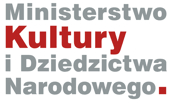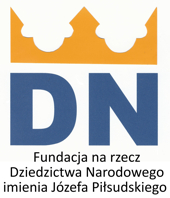The following program is just a small excerpt from Poland’s vast history.
Poland lost its independence in 1795 after the country was partitioned between three powers: Habsburg Monarchy, the Kingdom of Prussia and the Russian Empire. Poland disappeared from Europe's map for 123 years and regained its independence in 1918 at the end of WWI.
The Polish people had to fight hard to maintain sovereignty of their country. In 1919, Bolshevik Russia attacked Poland. The Polish military halted Russia’s advances close to the country’s capital - Warsaw. The clash of the two armies, known as the Battle of Warsaw, was a significant victory of the Polish forces that prevented the Bolshevik revolution from spreading into Western Europe.
An order No.10,000 from the Pilsudski Institute’s collection - the order to the Battle of Warsaw, from August 10th, 1920, is the most valuable historical document in the Institute’s collection. The order, written by gen. Rozwadowski, under the supervision of Marshal Pilsudski, documents the Polish army’s military moves during the Battle of Warsaw.
One might wonder why the order of the famous Battle of Warsaw is currently so far away from Poland, in New York, at the Pilsudski Institute of America. Well, the Institute has a very long and interesting history.
In 1939, after Germany and Soviet Russia attacked Poland, a collection of confidential military documents, known as the Belvedere Archives, was carried away from Warsaw during a secret and dangerous rescue mission. The fascinating events of those days could be the theme of a spy movie screenplay.
The wooden boxes from Warsaw reached Washington at the end of 1941. Former political allies of Marshal Pilsudski, together with the representatives of Polonia, decided to establish a new place devoted to preserving the documents and educating the American public about history and culture of Poland. That was the beginning of the Pilsudski Institute of America - established in New York in 1943 and named after Marshal Jόzef Pilsudski.
Józef Piłsudski was one of the most important figures in history of Poland. He is widely known as the father of Poland's independence in 1918. Interestingly, the wooden boxes with documents rescued from Warsaw in 1939 and later reached Washington, contained not only the military documents but also personal archives of Józef Pilsudski.
The Institute’s collection contains family records, letters written to close friends and political allies, as well as photographs illustrating the fascinating life of Marshal. The photos tell a story of a charismatic leader - from Pilsudski’s revolutionary youth as the fierce oppositionist of the Russian Empire through exile in Siberia - to the formation and leadership of the Polish Legions, legendary Polish military units formed within the Austrian Army, during World War I.
After World War I, Pilsudski served first as Chief of State, then Marshal and twice as a prime minister of Poland. Informally, he was a leader of the Second Polish Republic. Those events are illustrated by hundreds of documents from Poland located in our archives.
A charismatic persona and an experienced, yet, sometimes ruthless politician, in private life, he was a warm and affectionate person, appreciating family life. The photos from our collection show his favorite country house, Sulejówek, located on the outskirts of Warsaw. In Sulejówek, he enjoyed the family life in the company of his wife Aleksandra and daughters: Wanda and Jadwiga.
The collection of Marshal Pilsudski can be seen on our website: www.pilsudski.org
Over 80 years, many people were all part of the Institute’s history as they devoted their lives to serve Polonia.
Today, the Institute is a modern, bustling with life institution dedicated to preserving and promoting Polish heritage in the USA. Our archives are open to the public, as we house more than a million documents used by researchers and historians from all over the world.
During the last 15 years the Institute took on the challenging task of preserving the documents through the process of digitization. Now, large part of our collection, including precious military documents, rescued from Poland at the eve of WWII are available on our webpage: www.pilsudski.org
Yearly, the Institute organizes around 30 free public events at its headquarters in the heart of Greenpoint, Brooklyn. We educate about Polish history through popular meetings with famous historians, authors, documentary films screenings and art exhibitions. The Institute offers history classes and art workshops for school children that bring Polish traditions to life. Every few years the Institute hosts an Awards Gala to honor achievements of outstanding individuals in the field of history, art, science and literature.
The Institute is widely recognized and appreciated by Polish and American officials. Over the years, highest ranked members of the Polish government, including presidents, first ladies and prime ministers, visited the Institute.
All are welcomed to visit the Institute to see our collections and learn more about Poland’s culture and history.
The art gallery of the Pilsudski Institute has a special place in our collection. All the art pieces are gifts from generous donors with ties to the Institute. Those people, often members of the Board of the Directors, decided to leave a legacy for the new generations of Polonia.
Because of their gesture, now at the Pilsudski Institute’s gallery, we can admire an impressive collection of artwork some of the most acclaimed Polish painters from the turn of the 20th century: Jan Matejko, Stanisław Wyspiański, Wojciech Kossak, Aleksander Gierymski, Jozef Mehoffer and others.
The Institute was established in 1943 and almost 80 years later, we strongly believe it will continue to last for many new generations to come. Donating to the Institute is a great way to preserve one’s legacy as the Institute preserve memory about its donors.
We encourage you to become a member of our Institute and those who already are our members - to renew the membership every year. We are very grateful to all our members, donors and volunteers. The Institute exists because of people like you. Together we can do more for the future generations of Americans of Slavic descent.


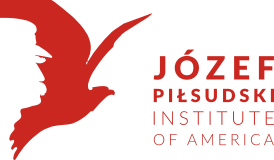
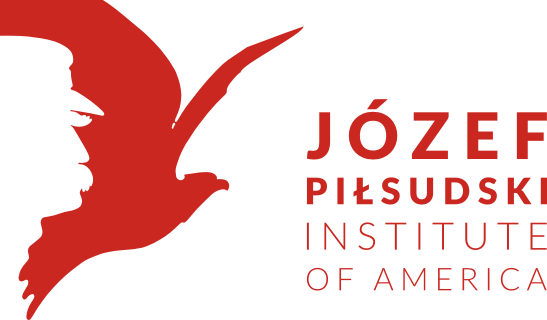
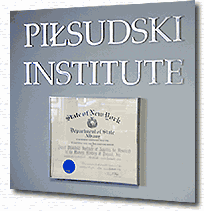 The Jozef Pilsudski Institute of America was established on July 4, 1943 in New York City as a major research archival and science institution for research of modern history of Poland. It was founded by a group of Polish-American community leaders, prominent Polish statesmen, and political expatriates. Among them were Franciszek Januszewski, publisher of Dziennik Polski in Detroit, Maksymilian Węgrzynek publisher of Nowy Świat in New York and three pre-war Polish government members: Ignacy Matuszewski, Wacław Jędrzejewicz, and Henryk Floyar-Rajchman. The Institute was established for the purpose of continuing the work of the Institute for Research of Modern History of Poland established in Warsaw in 1923. In 1936, the name of Jozef Piłsudski was added to the name of the institute.
The Jozef Pilsudski Institute of America was established on July 4, 1943 in New York City as a major research archival and science institution for research of modern history of Poland. It was founded by a group of Polish-American community leaders, prominent Polish statesmen, and political expatriates. Among them were Franciszek Januszewski, publisher of Dziennik Polski in Detroit, Maksymilian Węgrzynek publisher of Nowy Świat in New York and three pre-war Polish government members: Ignacy Matuszewski, Wacław Jędrzejewicz, and Henryk Floyar-Rajchman. The Institute was established for the purpose of continuing the work of the Institute for Research of Modern History of Poland established in Warsaw in 1923. In 1936, the name of Jozef Piłsudski was added to the name of the institute.